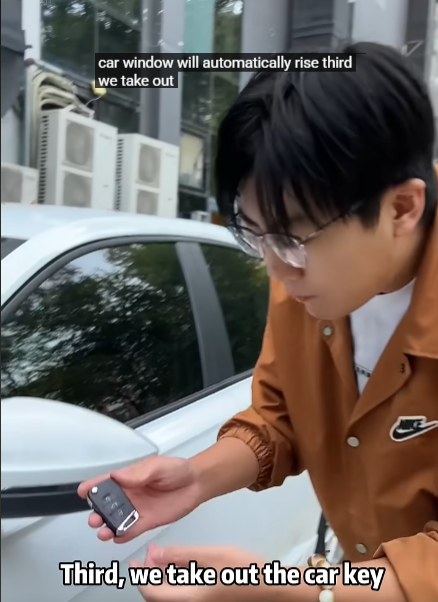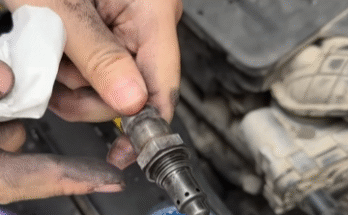
For many people, car keys are just tools to unlock doors and start the engine. However, modern car keys are packed with features that most drivers don’t even realize exist. Automakers have designed these smart devices to improve convenience, enhance safety, and add a touch of luxury to your driving experience. If you’ve been using your car key just to lock and unlock your vehicle, you’re missing out. Let’s dive into the hidden functions of car keys that might surprise you.
1. Remote Window Control
One of the most overlooked features in modern cars is remote window control. In many vehicles, holding down the unlock button on the key fob for a few seconds can open all the windows. This is especially handy during hot summer days when you want to air out your car before getting in. Similarly, holding the lock button may roll all the windows back up. It’s a simple trick that’s useful but often undocumented in the owner’s manual.
2. Folding Mirrors
Some cars come with power-folding mirrors that can be controlled through the key fob. Locking the car might automatically fold the mirrors in, preventing accidental damage while parked in tight spaces. Unlocking the car unfolds them again. This feature not only protects your mirrors but also gives you a visual confirmation that your car is locked.

3. Hidden Key Inside Smart Fob
Smart key fobs often contain a hidden physical key. This is especially useful when the fob’s battery dies. The small release switch or button on the fob allows you to pull out a traditional key that can manually unlock the door. It’s an old-school solution tucked inside a modern gadget, and many drivers don’t even realize it’s there.
4. Trunk Access from a Distance
Many key fobs have a dedicated trunk button. Holding this button can open the trunk remotely, which is useful when your hands are full of groceries or luggage. In some cases, pressing the button twice quickly will pop open the trunk without needing to touch the car at all
5. Remote Engine Start
A feature once limited to luxury cars is now becoming more common: remote engine start. This allows you to start your engine from a distance using the key fob. It’s perfect for warming up your car in winter or cooling it down in summer before you even step inside. Typically, this is done by pressing the lock button twice and then holding another button for a few seconds—though it varies by manufacturer.
6. Panic Button
Most key fobs come with a red “panic” button. When pressed, it sets off the car’s alarm, which can help you find your vehicle in a crowded parking lot or scare off potential thieves. Just holding the button for a few seconds is enough to activate it.

7. Personalized Memory Settings
In some higher-end vehicles, the car key stores personalized settings such as seat position, mirror angles, and even radio preferences. When a specific key is used, the car automatically adjusts to the preferences of the person holding that key. This is particularly useful in households where multiple drivers use the same car.
8. Smart Unlocking
Some cars allow you to unlock doors without taking the key fob out of your pocket. If your vehicle has proximity sensors, simply touching the door handle is enough to unlock the car. It’s convenient and secure, especially when you’re carrying bags or rushing in the rain.
9. Fuel Cap and Tailgate Unlocking
Did you know that some car keys can unlock the fuel cap or tailgate separately? This function is especially common in trucks and SUVs. A separate button or a long press on the unlock key can give access to the tailgate while keeping the rest of the vehicle secure.

10. Disable/Enable Passive Entry
You might not want your car to always unlock when you’re nearby. Some key fobs let you disable the passive entry system. This can help save battery or improve security when you’re near the car but don’t want to unlock it accidentally.
11. Reprogramming Your Key Fob
In many cars, the key fob can be reprogrammed to change the behavior of your vehicle. Want the lights to flash when you lock the car? Or maybe you prefer silent locking? These preferences can often be set through a series of key fob actions combined with ignition cycles or on-screen menus. Check your owner’s manual or visit a dealership to find out how.
12. Hidden Emergency Functions
Some keys offer hidden emergency functions, like unlocking the car if the battery dies. In certain models, holding the fob up to a specific spot—like the driver’s door handle or a special spot on the dashboard—can still unlock or start the car even when the fob’s battery is dead. These features use low-frequency backup signals to maintain function in emergency situations.

13. Keyless Ignition Backup
If your push-start button won’t recognize the key fob because of a dead battery, there’s often a backup method to start the car. Place the key fob near the start button or insert it into a designated slot (found in the glovebox, console, or under the steering wheel in some vehicles). The vehicle will detect the chip and allow you to start it.
14. Find Your Car with a Smartphone
Some car brands now offer smart keys integrated with mobile apps. These allow you to locate your vehicle, lock/unlock the doors, and even start the engine using your phone. While technically not a function of the physical key, this digital extension is rapidly becoming part of the modern car key experience.
15. Valet Mode Activation
Many luxury cars offer a valet mode that can be activated using the key fob. This mode limits access to personal information and restricts vehicle performance, protecting your car when it’s driven by others. It’s a smart way to maintain privacy and safety at restaurants, hotels, or service centers.

Conclusion
Today’s car keys are more than just simple devices. They’re sophisticated tools designed to make driving easier, safer, and more enjoyable. From rolling down windows remotely to starting your engine from across the parking lot, these hidden functions can make a big difference in your day-to-day life.
If you haven’t explored all the features your car key has to offer, now’s the time. Check your owner’s manual, or experiment carefully with the buttons—you might just discover a feature you never knew you had.



